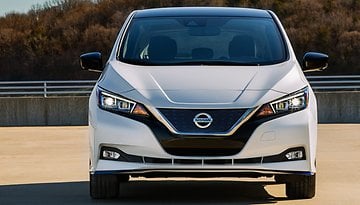More than a filter: How to use iPhone Photographic Styles


The iPhone 13 launch event saw the Photographic Styles feature highlighted by Apple as an important new feature of their latest smartphones. But many were left wondering just how different that is compared to the hugely popular filters. Understanding how the Photographic Styles differ and how to take advantage of this new iPhone feature is the purpose of this tutorial.
At first glance, Photographic Styles apply the same changes in hue, temperature, and saturation as traditional filters. But just like Cinematic Mode, the feature takes advantage of the iPhone's hardware to provide a different result compared to existing methods.
- iPhones in 2021: Promotions, prices, comparisons, and more!
- iPhone 12 vs iPhone 13: Is it worth the upgrade?
How iPhone 13 Photographic Styles work
Photographic Styles take advantage of the ISP (image signal processor) in the Apple A15 SoC as it selectively applies effects to the image, unlike filters, which modify the entire image. While filters work in a manner that is similar to analog photography (where negatives, photo prints, the filters themselves, and other factors influence the final result), Photographic Styles offers another step up in computational photography.
This feature takes advantage of the ability of modern image processors in order to identify different elements in a scene - people, objects in different planes, sky, etc., and then applying effects differently to each of them, similar to what a photographer or image editor would do in the post-processing stage.

One advantage of this technique is that it has the power to maintain natural skin characteristics, for example, while increasing color saturation on objects around the person(s) in the foreground.
Photographic Styles are available in four preset options: Rich Contrast, Vibrant, Warm, and Cold, which can be customized in terms of hue and color temperature. For comparison, the iPhone's Standard mode is presented as "balanced and realistic".
iPhones compatible with Photographic Styles
Although Apple claims that the feature is enabled by the A15 Bionic processor, the manufacturer did not mention the compatibility of Photographic Styles with the iPad Mini (2021), which is also equipped with the A15 Bionic SoC, albeit featuring just a single camera on the rear. Thus, these are the iPhone models compatible with the latest feature:
How to use Photographic Styles
The novelty of the iPhone 13 line can be accessed via the iOS camera app itself, by tapping the ^ button (at the top of the screen) and followed by the feature icon (with three parallel images). Alternatively, you can access the feature in Settings > Camera > Photo graphic Styles.
Once activated, just swipe the screen to the side for a preview of the effect in real-time. Right below the available effects, you are able to customize the Tone and Warmth, adjusting them to suit the scene accordingly. To return the styles to default settings, just tap the circle icon that is next to the settings (just above the button for switching between cameras).
Here are some examples of viewing the different styles in the camera app using an iPhone 13.
Check out the result of the effects applied on the photos (click on the images to view them in their original resolution):
Other photography articles on NextPit
- How to Make the Most of iPhone 13's Cinematic Mode
- Blind Camera Test 2021: The NextPit community selects the best mobile camera
- The best smartphone cameras on the market
Conclusion
Although similar to the filters that are currently available on any smartphone in the market, Photographic Styles are an evolution of the concept, taking advantage of the image processing capabilities found in modern SoCs. In the hand of more demanding photographers, the feature can save time when it comes to image post-processing in Adobe Lightroom or Apple Photos, for example.
With the adjustments offered, the effects can be customized to achieve a more natural result, similar to the one highlighted by editor Benjamin Lucks in his review of the Sony Xperia 1 III, or the saturated characteristic of the photos captured on Samsung phones. Basically, a lot of it depends on the photographer's personal preferences.
And of course, nothing prevents other manufacturers to implement similar features on their devices. Xiaomi, for example, announced in early 2021 that their ROM found in the Mi 11 will offer smart filters that can apply watercolor effects or sketch background elements. Samsung, meanwhile, leverages the processor in its high-end devices to create custom filters that mimic the style of your favorite images.

In addition, I could not fail to mention the controversial filters that alter the features of a face to enlarge the eyes, make your face slimmer, and change the nose and chin's features, among other body parts, as one undergoes digital plastic surgery without having to worry about insane surgical fees or nasty side effects.
All of these examples take advantage of the potential of ISPs to save time editing photos, resulting in images that are ready to share with friends and relatives across instant messaging apps like WhatsApp or on social networks.
In the case of Photographic Styles, Apple has bundled this image processing potential for the photographer to customize smart filters that can be applied to other photos. It's not hard to imagine the company offering future variations of the technique, including the feature demonstrated by Xiaomi, or perhaps options that use artificial intelligence features to change the appearance of the sky, similar to those found in professional tools.
This article was written in collaboration with our editor, Camila Rinaldi.























